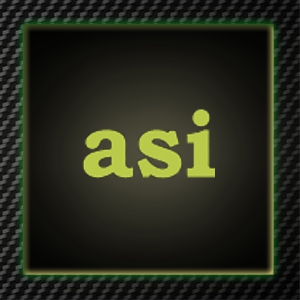ASI’s 2011 food budget totals well over $80,000

May 9, 2012
A 2010-11 independent auditors’ report on Associated Students Inc. says the food costs of the Sacramento State organization have been increasing.
According to ASI’s most recent independent auditors’ report for 2010-11, the organization spent a total of $80,299 on food in 2010 and $89,125 in 2011.
The report states in 2011, ASI programs spent $88,262 on food while the ASI administration spent $863.
Director of Finance and Administration of ASI Mark Montalvo said the funds ASI acquires to keep its programs functioning are derived from the fees students pay alongside their tuition.
“Approximately half of ASI funding comes from student activity fees,” Montalvo said. “The other half comes from program fees such as fees for camps, rentals such as kayaks and ski equipment, children center fees and sales of caps and gowns.”
The 2010-11 auditors’ report states Student Services profited $236,310 from mostly program service fees. Programs, such as Peak Adventures and the Aquatic Center, have both been operating with program service and student activity fees.
There are eight programs under the organization, but the programs such as Peak Adventures, the Aquatic Center and the Children’s Center have been the bulk of the costs. In 2011, Peak Adventures spent a total of $9,048 on food while the Aquatic Center spent $35,736.
“These two programs (the Aquatics Center and Peak Adventures) account for over 50 percent of the food costs due to children camps offered and lunches or snacks being provided,” Montalvo said. “The directors manage this cost by charging the participants a fee, which would cover the cost of food.”
According to the Revenue and Gains portion of the 2010-11 auditors’ report, the Aquatic Center received a total of $1,854,607 from both student activity fees and program service fees while Peak Adventures received a total $770,697 from both.
Executive Director of ASI Pat Worley said the reason why the Aquatic Center and Peak Adventures account for most of the food costs is because since it is covered with a specific trip, it allows students to pay a lower cost.
“What they’re including in that cost of that trip is the personnel cost, staff cost, travel cost or how much it costs to get you there,” Worley said. “Since they decided they would cover the lunch for you, they’ve included that in their assessment of what’s the actual cost of this trip. So out of that, they generate what’s the cost of that to the participant.”
Montalvo said other programs like the Children’s Center spend a necessary portion of the funds to keep the children fed.
“(Approximately) $32,754 or 37 percent (of the expenditures) is spent in the Children’s Center which is used to feed the children lunches and snacks during the course of the day,” Montalvo said. “These meals are federally mandated as part of the Federal Child Care Food Program. The Children’s Center recently went through a federal audit to review the food program in the center and emphasizes the nutritional value of food served by the Children’s Center.”
Despite 37 percent of the food expenditures for the Children’s Center, the program is covered by the Federal Child Care Food Program which helps with the center’s food costs.
Director of the Children’s Center Denise Wessels said the center serves the children food, but they are later compensated for the costs based on what they have served.
“We do a monthly food report called a food claim,” Wessels said. “Each month, we tally up all the breakfasts, all the lunches, all the snacks we’ve served. We provide that information in a report and we do that online to the child care food program system. They reimburse us later. “
Wessels said the Federal Government does pay the center back, but it is not the full cost.
“Although it might cost us maybe $2 a child to make a meal, we’ll only get reimbursed part of that,” Wessels said. “The food program doesn’t pay completely for each meal we serve the children, but it helps us with those expenses.”
Senior biology major Joanne Ramos said it is good there is a budget for student activities, but there should be a balance.
“I think it’s they have a good budget for student activities because we do need something to take the stress off when we worry about school,” Ramos said. “I also think they could put a little more (money in the CSU system) so we can have more classes because everybody is having a tough time registering for classes, but I also understand because it’s not really their fault and it’s the government’s budget.”
Worley said despite administration spending $863 on food in 2010-2011, they try to have a modest budget. Looking at her budget, Worley said she reduced the food line item by $1,000.
“We’re always aware of what our expenditures are,” Worley said. “A significant portion of those food costs are part of the delivery of our programs and services. If we start taking away or trying to keep food costs low, what we’re doing is eroding or taking our program and servicing.”
Montalvo said $89,125 can be seen as a high cost of food, but it does not epitomize the program because the costs are passed onto the activity participants when they pay.
“ASI will continue to be prudent with spending on food,” Montalvo said. “It must be made clear that the majority of food purchases are reimbursable by the consumers as program fees being charged. Camps, day hikes, ski trips, and many other activities that are day long or longer, ASI will provide the services that are being requested by the consumer which usually include meals.”
Camille Anglo can be reached at [email protected].




























































































































